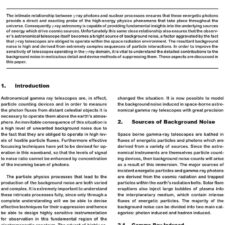Development of On-Orbit Servicing Concepts, Technology Option and Roadmap (Part I): Commercial Aspects
£5.00
D. Grover; S. Jacobs; V. Abbasi; D. Cree; M. Daae; J. Hay; W. He; X. Huang; Z. Jun; S. Kearney; T. Kuwahara; F. Lenzi; H. Mirahmetoglu; S. Morley; M. Otani; M. Pastena; M. Pinni; J. Schwartz; K. Shala; J.-F. Shi; J. Singh Khorai; M. Steinkellner; D. Treat; S. Ulrich; P. Verheyden; X. Y. Wang; C. Weeden (2008), JBIS, 61, 203-212
Refcode: 2008.61.203
Keywords: On-Orbit Servicing, life extension, orbital replacement unit, satellite industry, telecommunications, economics
Abstract:
On-Orbit Servicing has the potential to completely reshape the satellite industry, but for the technology to become common- place, the commercial benefits must be apparent. This paper first examines the economics of servicing missions, demonstrating the potential financial gains possible through viable de-orbiter and life extension concepts, as well as a component exchange service in Geostationary Orbit. The system trades and the resulting architecture are presented, and an economically viable mission concept is discussed. The analysis uses current commercial satellite revenue generation and capital expenditure statistics, and for the analysis of the exchange service, assumes a landscape 20 years in the future where satellite design incorporates some levels of standardization. The system design costs and pricing points necessary to make the exchange mission economically viable are calculated. The findings of this paper are that On-Orbit Servicing missions, including life extension missions in the near future and component exchange services in the mid-term are economically viable possibilities and could be pursued by satellite operators or private companies.





